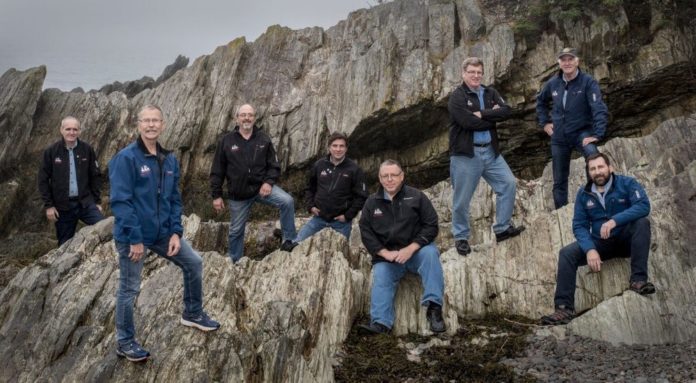
Sea shanties aren’t the kind of thing most people would expect to go viral on TikTok, an app known for dancing videos and comedy. But Nathan Evans went viral in December for his acapella rendition of “Wellerman,” a whaling song thought to have originated around 1860 in New Zealand. Since then, sea shanties have rocketed into popularity.
Before The Mast is an acapella sea shanty group of nine singers based in Saint John. Their leader, Gary Caines, is the son of a sea captain and spent 20 years in the naval reserves.
Caines started singing in university and kept a record of sea shanties he came across until the group formed in 2007. Still, Caines wanted to do things a little different than most nautical music and started playing without any instruments.
“We started because nobody else was doing it, or so I thought,” said Caines, “But I thought ‘if we’re going to do this, let’s do it the way the sailors did, without music.’”
Caines said the explosion of sea shanty interest on social media is intriguing, but not without its shortcomings.
“It transformed into something well beyond a sea shanty, but at least it’s a shanty and people are discovering it. See, behind each one is a story. I mean, how many people have bothered to ask what ‘tonguing,’ means in the song?” said Caines.
Caines is referring to the lyric “One day, when the tonguing’ is done, we’ll take our leave and go,” from the song “Wellerman.” Since the singers of “Wellerman” were on a whaling ship, the song refers to slicing long sections of blubber from the caught whales. This practice was called “tonguing.”
Eric Alper, music correspondent, author and host of ThatEricAlpers’ show on SiriusXM, has also observed the sea shanty trend.
“This is an absolute perfect example of the music industry trying to play catch up to something that they had absolutely no involvement in and that’s the beautiful thing about when things go viral,” said Alper.

The question on the minds of singers and fans alike, however, is simple: what’s next? Will the interest last?
“Because of social media things happen so quick, so fast, that it travels around the world, rather than word of mouth or radio,” said Alper. “It’s really easy to burn out, because usually the faster you go up, the faster you go down.”
Alper said he’d be surprised if the numbers continue to rise in four months. Still, he isn’t convinced that this is the end for sea shanties.
“It opened up the door for people to listen to more East Coast music,” said Alper.
Third-year student Dominik Malenfant caught wind of the sea shanty trend and began enjoying them.
Malenfant said the fuse of sea shanties is small and will fizzle out but they’re still something he’ll keep in his playlists.
Sea shanties are catchy, easy to learn and provide a steady rhythm, Malenfant said. The songs are also infectious and people are picking them up again, he added.
“It’s definitely a good drinking song. It gives a sense of unity, it will bring people together, and people are definitely drinking a lot more now that it’s trending.”
